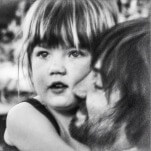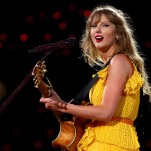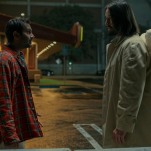Saturday Mattered, But Friday—and All the Fridays to Come—Will Matter More
Photo by Spencer Platt/Getty
People keep asking me how the Women’s March was. They ask if it felt amazing, if I was proud. They ask if I had a good time. The short, blunt answer that I’ve been holding back is no. It didn’t feel amazing. I wasn’t proud. I didn’t particularly have a good time.
I’m glad I came. It feels like the right choice, it gave me something to do with my feet and my energy and my fear. But I didn’t enjoy myself this weekend.
What I felt more than any other emotion was loneliness. Surrounded by hundreds of thousands of people on Saturday, I wondered where they had all been during the protests on Friday. Where they were when my hometown of St. Louis declined to prosecute Michael Brown’s killer. Where they were on November 8.
The vast majority of people seemed so excited on Saturday. To an extent, they should be. It was an overwhelming, powerful show of force. But this movement is paved with the blood of women, people of color, trans people, queer people—not funny posters and pink pussy hats. It’s a movement fueled by tragedy.
The reality I experienced both on Friday and Saturday is not one that has been reflected in any of the media that I’ve consumed thus far. My lived experience appears to be profoundly different from the ones that are being presented to the public. Several hundred articles have been published bemoaning the burning of a trashcan. Articles about the articles about the burning trashcans were posted. There are articles about protesters throwing rocks at police and articles about Kellyanne Conway’s bizarre American Girl Doll outfit. There are roundups of punny signs from the Women’s March. There are tomes on the indefatigable spirit of women.
None of these are necessarily inaccurate portrayals of the weekend. They do however miss so many of the weekend’s other important stories. Stories that are necessary to effectively fight threats against our most marginalized citizens, some that are as old as this nation itself and some that are new, terrifying dangers presented by this administration.
What I saw on Friday were organized, passionate, careful protests meant to disrupt the complacency and ease with which so many are allowing this administration to take power. I saw no bricks nor tear gas. I didn’t see the punch or the arrests. What I did see were black women and men, wrapped in shiny chains, new chains, standing tall in front of an inauguration checkpoint. I saw them dance, chains clanking with their movements, to a marching band playing “Got to Be Real.” Joyfully breaking it down as around them people chanted “black lives matter” in time with the song’s unimpeachable bass line. I saw protesters quickly shut down one of their own after he decided to throw a clot of grass at a particularly antagonistic Trump supporter. The group collapsed around the young man, firmly informing him “That’s not what we’re doing here.” I saw a massive crowd of people, strangers of all ages races creeds, sing “Hell You Talmbout” defiantly at gathered Trump supporters. Shouts of “say her name” bounced off the high stone walls of the buildings flanking John Marshall Park. The next day, their shouts were amplified several thousand times over as Janelle Monae, Jidenna and others performed the song, giving the murdered men and boys and women’s mothers a chance to share their names with the gathered crowds.
The best speech I heard all weekend was not at the rally, but from a woman speaking extemporaneously into a megaphone. She spoke passionately, working to draw attention as the black men and women who had bravely blocked the checkpoint slipped off their chains and dispersed, trying not to attract the attention of any police or antagonistic Trump supporters. She spoke for four minutes, urging the crowd not to grow complacent, to not forget about the most vulnerable people amongst us, to never grow tired.
“When we are asked what we did when he took power, may we have an answer we can be proud of,” she said in the clammy cold midmorning.
There have been public criticisms of all these protests, claiming they are unfocused and will not actually achieve anything. Yet what I saw on Friday were dozens of groups with clear, critical goals gathering together to increase their impact. At the Festival of Resistance at Columbus Circle, an event organized by Disrupt J20, feminist groups joined with Black Lives Matter groups marched with native rights groups worked with immigration rights groups. Chants in English and Arabic and Spanish filled the circle. There was no way you could argue that these groups didn’t have specific, actionable goals. They have been fighting for them for decades, generations. For many people, these goals are part of their identities.
Leaving Columbus Circle, the hundreds of people marched peacefully through neighborhoods where residents exited their houses to cheer and take informational materials. People poured out of bars and restaurants where they were enjoying their lunches to watch as the group went by chanting “no Trump, no KKK, no fascist USA.” Stopping in sight of the Capitol, the group filled the street and had a die-in, lying still on the ground for several minutes as a siren blared from a megaphone. Nestled between the backs and feet of strangers, I saw a toddler sitting on her mother’s side, watching the protest with slightly detached interest, a visible representation of why all of these people were laying in a soaking wet, dirty street.
-

-

-

-

-

-

-

-

-

-

-

-

-

-

-

-

-

-

-

-

-

-

-

-

-

-

-

-

-

-

-

-

-

-

-

-

-

-

-

-








































